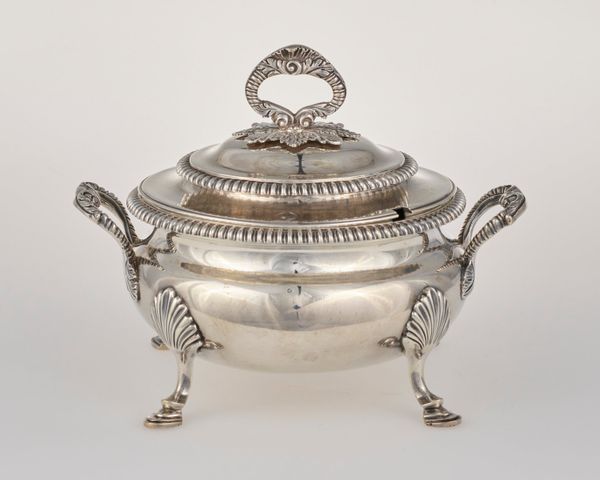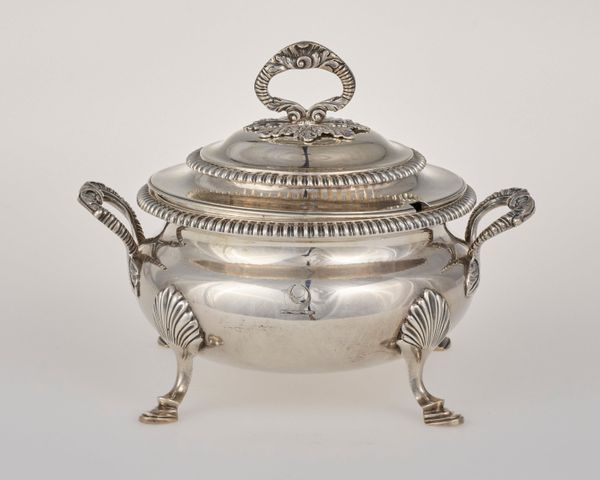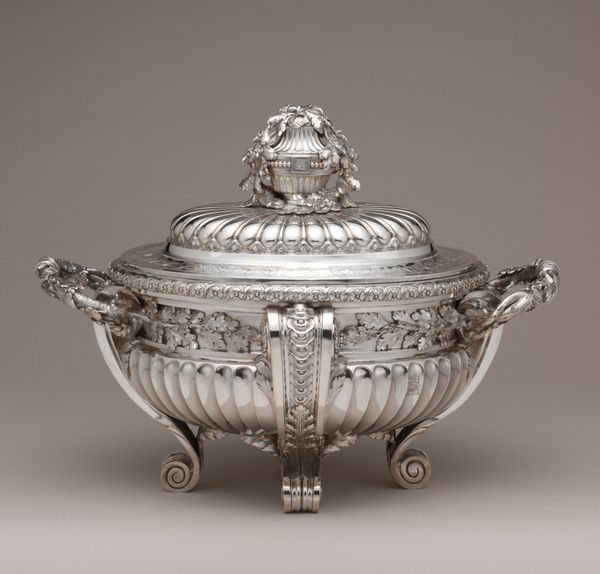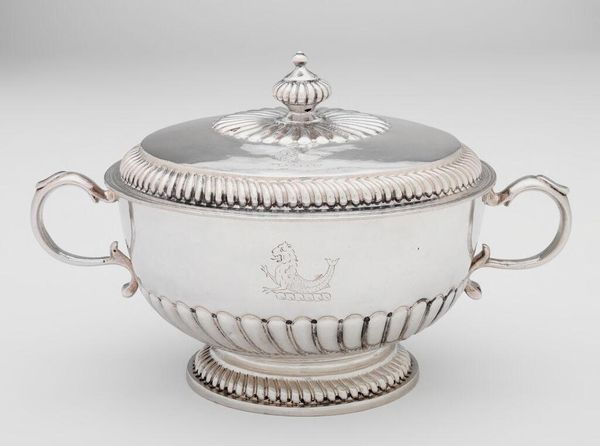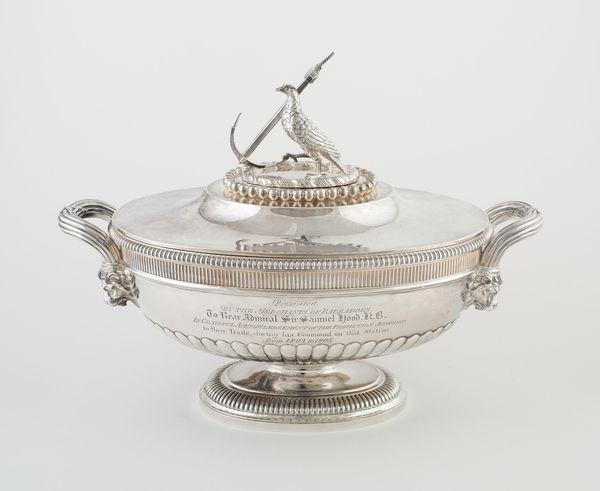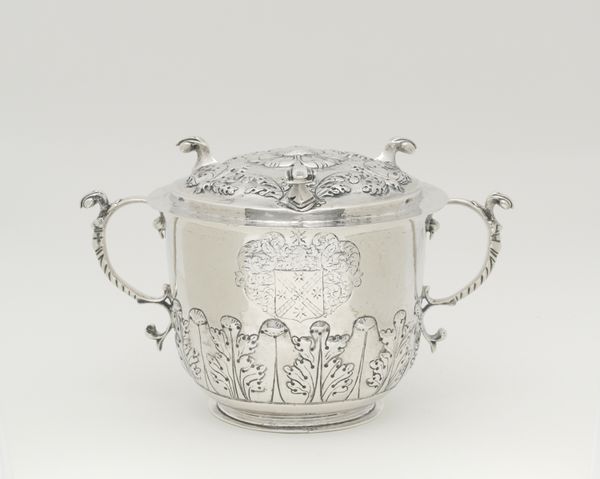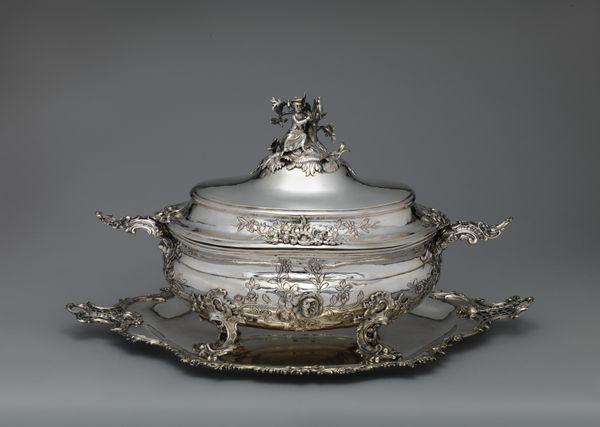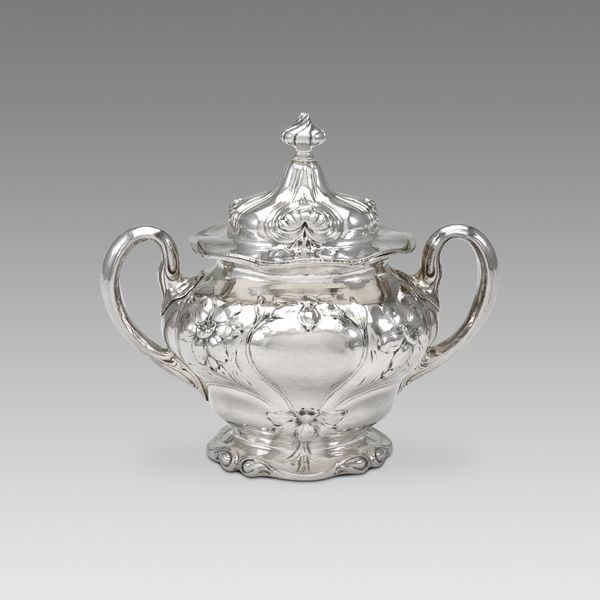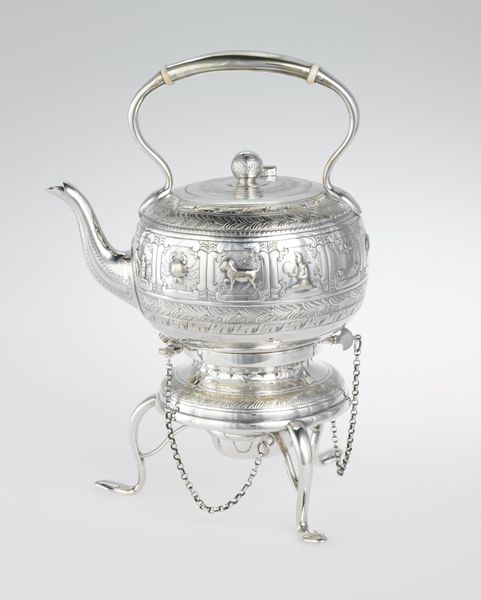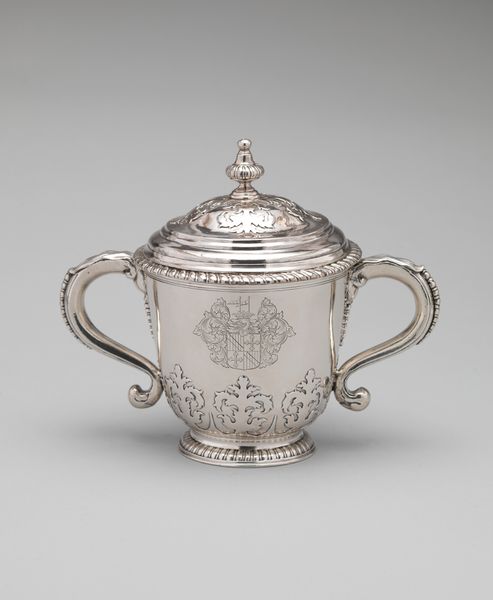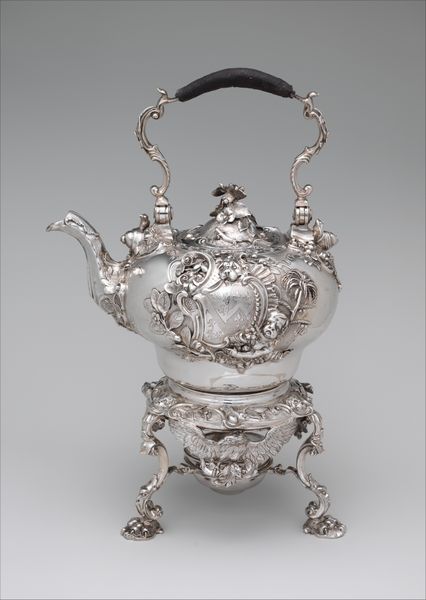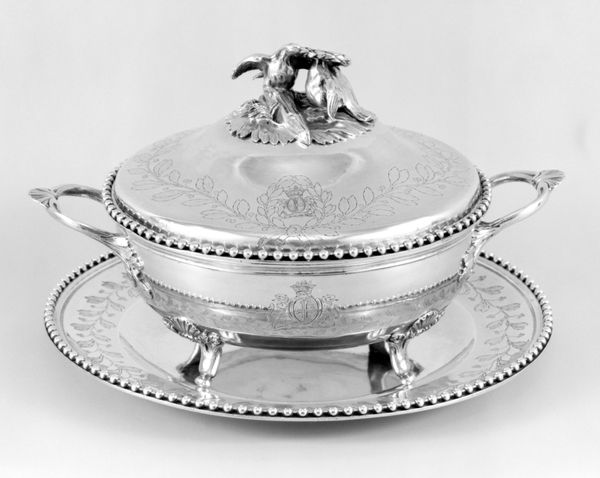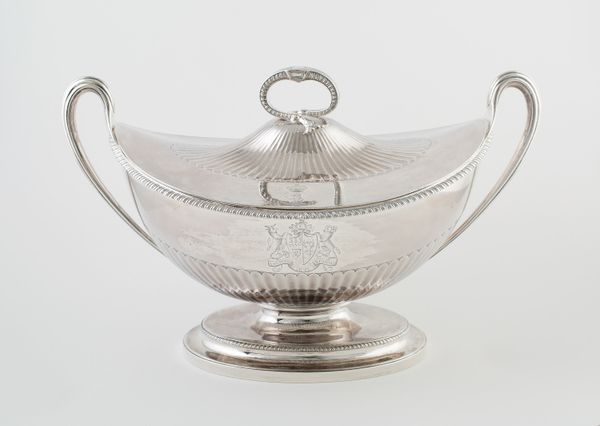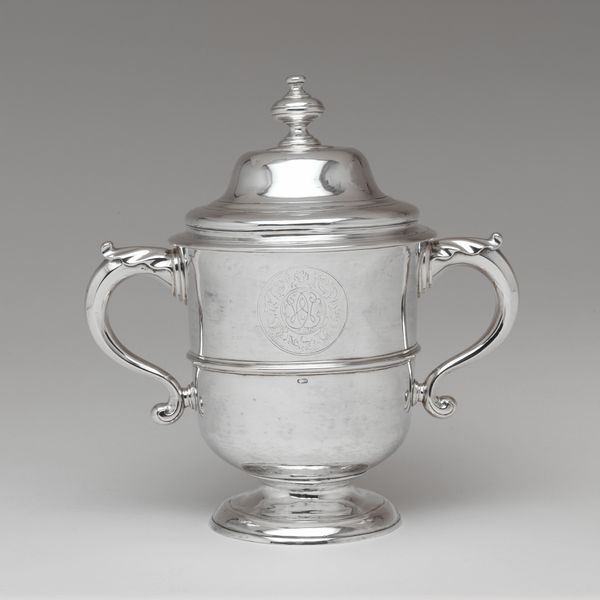
Dimensions: height 33.2 cm, width 30.0 cm, depth 23.2 cm, weight 3200.0 gr
Copyright: Rijks Museum: Open Domain
Editor: This gleaming silver tea urn, crafted in 1828 by Firma Bennewitz en Zonen, is striking. Its baroque style, with those intricate details and flourishes, seems to hint at a very particular moment in social history. How should we interpret this piece, considering its place within 19th-century society? Curator: Excellent point. This wasn't merely an object; it was a statement. In the 19th century, owning such a lavish tea urn, particularly made of silver, signified more than just wealth, didn't it? Think about the societal rituals tied to tea. Who do you imagine were gathering around this urn? Editor: The upper classes, certainly, using tea as a tool for cultivating alliances, setting trade conditions... Curator: Precisely. Tea became intertwined with colonialism and global power structures. Reflect on the brutal history of tea production, the exploitation of labour and resources in colonized lands. The very act of sharing tea from an urn like this becomes laden with political implications, doesn't it? Editor: I see your point. The beauty of the object can almost be a distraction from these power dynamics at play. Does focusing on that shift our perception of decorative arts like this? Curator: Absolutely. Recognizing the historical and social context is vital. By acknowledging this, we can better discuss issues of inequality, exploitation, and privilege reflected within such items. It prompts us to critically examine the narratives they perpetuate. Editor: This has made me consider decorative arts in a new way; rather than just appreciating their aesthetic value, also considering the context in which they were produced, consumed, and what they symbolize. Curator: Exactly, it opens avenues to richer discussions! Now, when you look at the urn, what other questions come to mind regarding gender, race, or social justice?
Comments
rijksmuseum about 2 years ago
⋮
This may have been intended as a tea urn, but it could also be meant to contain coffee. Cups were placed underneath the spigot to be filled. The plain shape is characteristic of Amsterdam silver of the early 19th century.
Join the conversation
Join millions of artists and users on Artera today and experience the ultimate creative platform.
